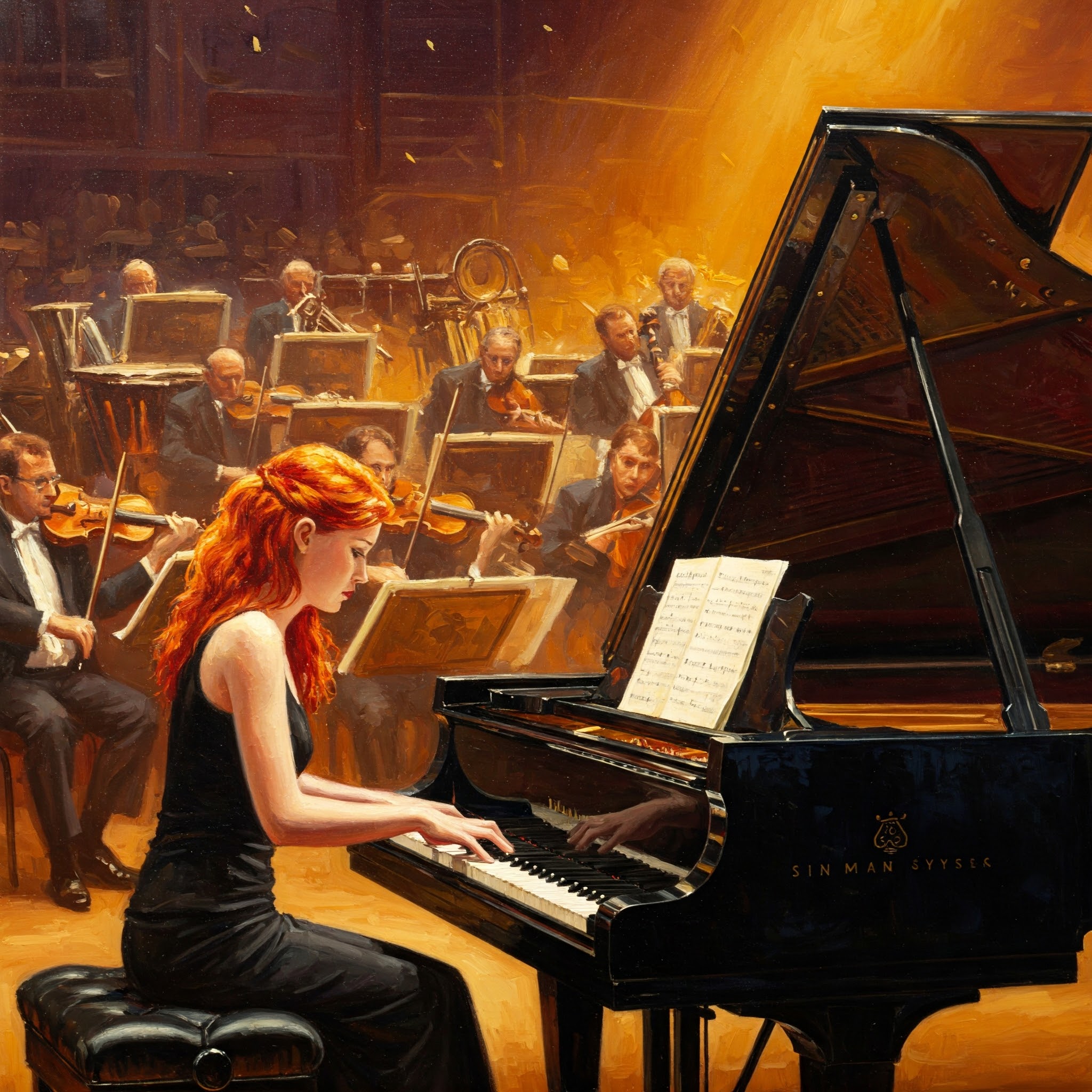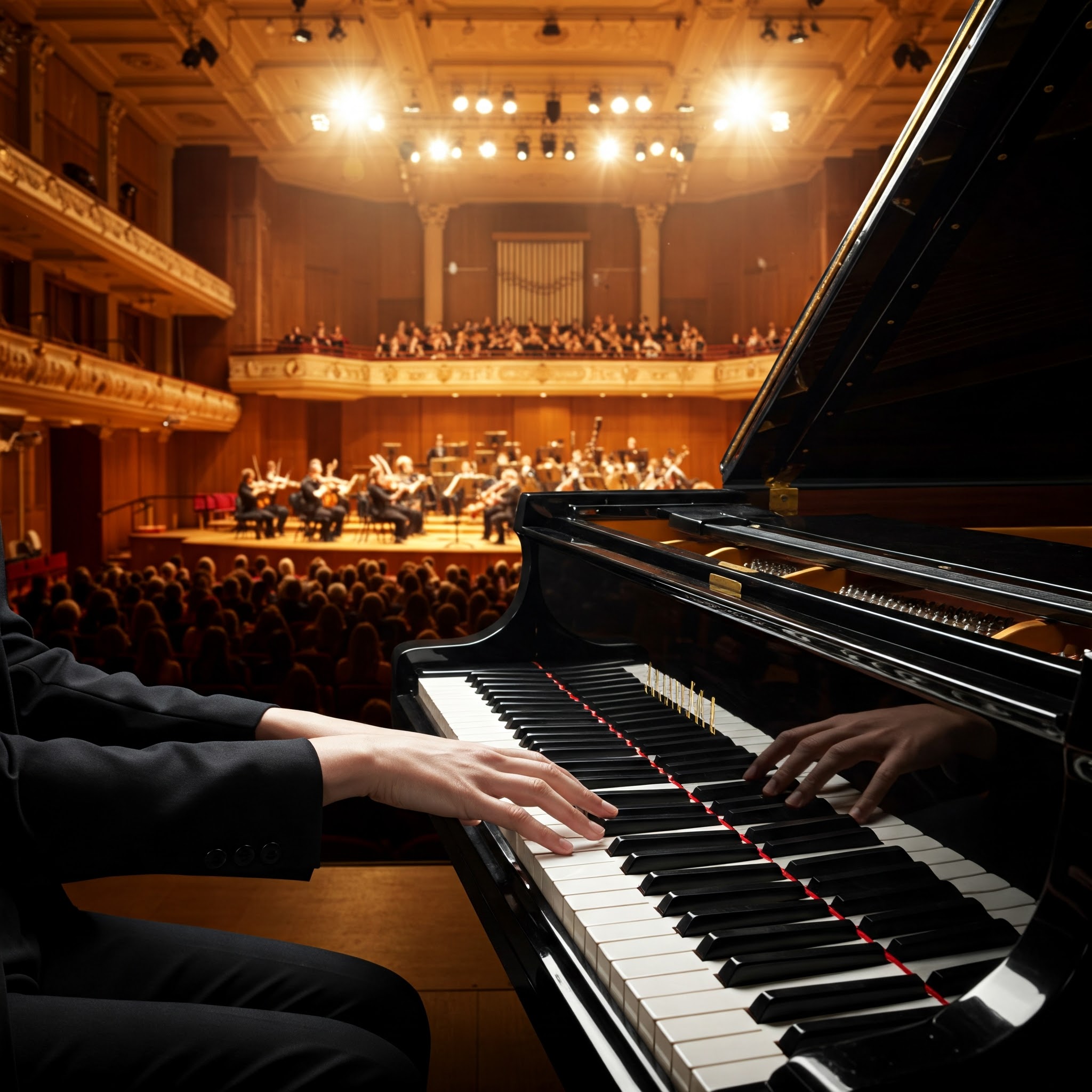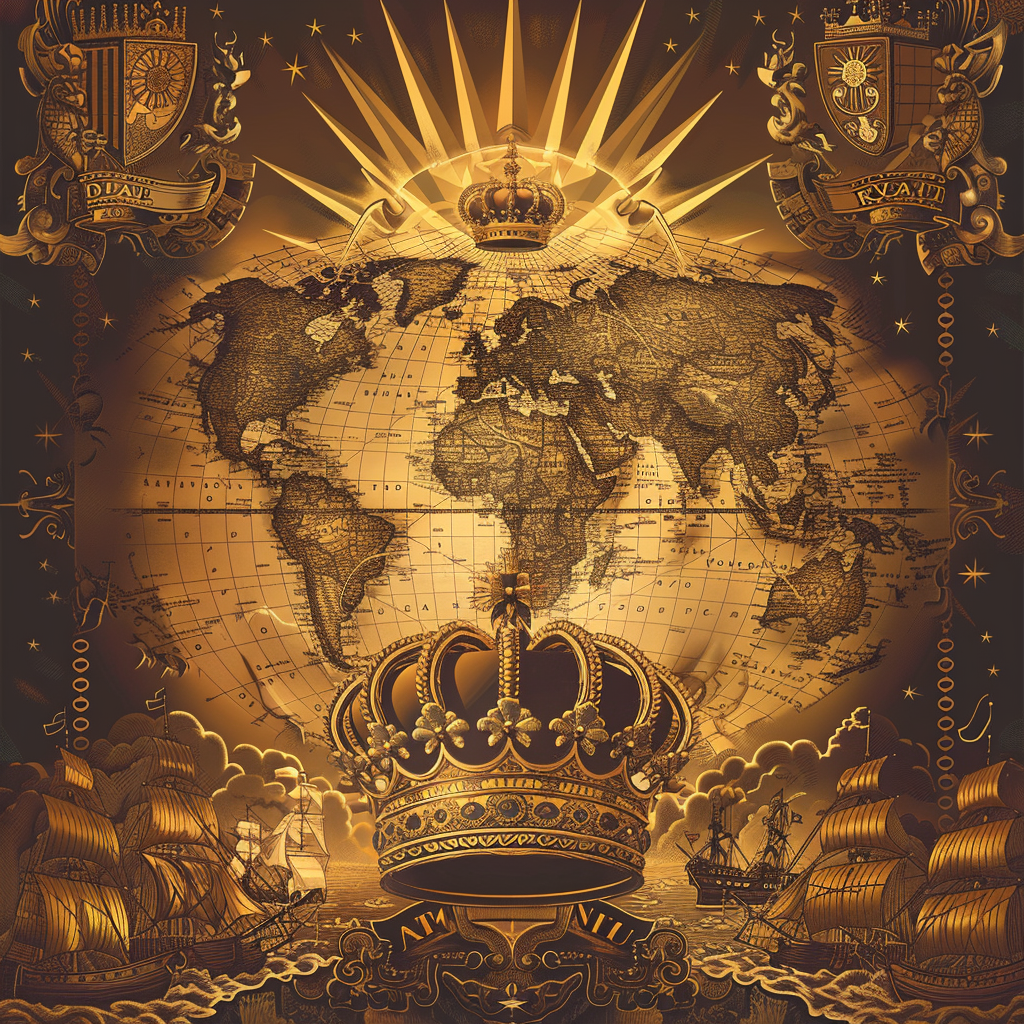Piano
Definition
Piano is a noun. It refers to a large musical instrument with a keyboard, strings, and hammers, used to produce a wide range of tones. It is one of the most popular instruments for both classical and modern music.
Parts of Speech
- Noun
Pronunciation
American English
- IPA Pronunciation: /piˈæn.oʊ/, /pɪˈæn.oʊ/
- Respelling: pee-AN-oh, pi-AN-oh
British English
- IPA Pronunciation: /piˈæn.əʊ/, /pɪˈæn.əʊ/
- Respelling: pee-AN-oh, pi-AN-oh
Etymology
The word "piano" originates from the Italian term "pianoforte," which combines "piano" (soft) and "forte" (loud). The name reflects the instrument's ability to produce sounds at varying dynamics. It was shortened to "piano" in English usage in the 18th century.
Derivatives
- Pianist (noun)
- Pianoforte (noun)
- Piano-playing (noun/adjective)
- Piano bench (noun)
- Piano tuner (noun)
Synonyms
- Keyboard
- Grand piano
- Upright piano
Antonyms
- None
Usage
The term "piano" is commonly used in musical and educational contexts. For example, "She plays the piano beautifully," or "The school purchased a new piano for the music department."
Related Terms
- Music: The art of arranging sounds in time to produce a composition.
- Keyboard: A set of keys on a musical instrument or device.
- Harmony: The combination of simultaneously sounded musical notes to produce chords.
Detailed Definitions
Noun
- A large musical instrument with a keyboard, strings, and hammers, used for playing music:
- Example: "The piano is often used in solo performances, ensembles, and orchestras."
- A specific type of keyboard instrument, including grand and upright variants:
- Example: "The grand piano is preferred for concert performances."
- An essential instrument in Western music, known for its versatility:
- Example: "The piano can produce a wide range of dynamics and tones."
piano



🇨🇳 Mandarin
- 钢琴 (gāngqín)
- IPA: /káŋ tɕʰǐn/
- Respelling: kahng-chin
🇮🇳 Hindi
- पियानो (piano)
- IPA: /pɪjaːnoː/
- Respelling: pi-ya-no
🇪🇸 Spanish
- Piano
- IPA: /ˈpjano/
- Respelling: pja-no
🇫🇷 French
- Piano
- IPA: /pja.no/
- Respelling: pya-no
🇸🇦 Modern Standard Arabic
- بيانو (biānū)
- IPA: /biːaːnuː/
- Respelling: bee-a-nu
🇧🇩 Bengali
- পিয়ানো (piẏānō)
- IPA: /piano/
- Respelling: pi-ya-no
🇷🇺 Russian
- Пианино (pianino)
- IPA: /pʲɪˈnʲinə/
- Respelling: pee-a-nee-no
🇵🇹 Portuguese
- Piano
- IPA: /piˈɐnu/
- Respelling: pee-aa-nu
🇮🇩 Indonesian
- Piano
- IPA: /piano/
- Respelling: pee-a-no
🇩🇪 German
- Klavier
- IPA: /klaˈviːɐ̯/
- Respelling: kla-vee-er
🇯🇵 Japanese
- ピアノ (piano)
- IPA: /pʲa̠no̞/
- Respelling: pee-a-no
🇻🇳 Vietnamese
- Đàn piano
- IPA: /ɗâːn ˧˩ pi˧ aː˧˥ nɔj˧˩/
- Respelling: dan pee-a-noy
🇰🇷 Korean
- 피아노 (piano)
- IPA: /pʰi.a.no/
- Respelling: phee-a-no
🇹🇷 Turkish
- Piyano
- IPA: /pjaːno/
- Respelling: pya-no
🇵🇰 Urdu
- پیانو (piano)
- IPA: /pɪjaːnoː/
- Respelling: pi-ya-no





